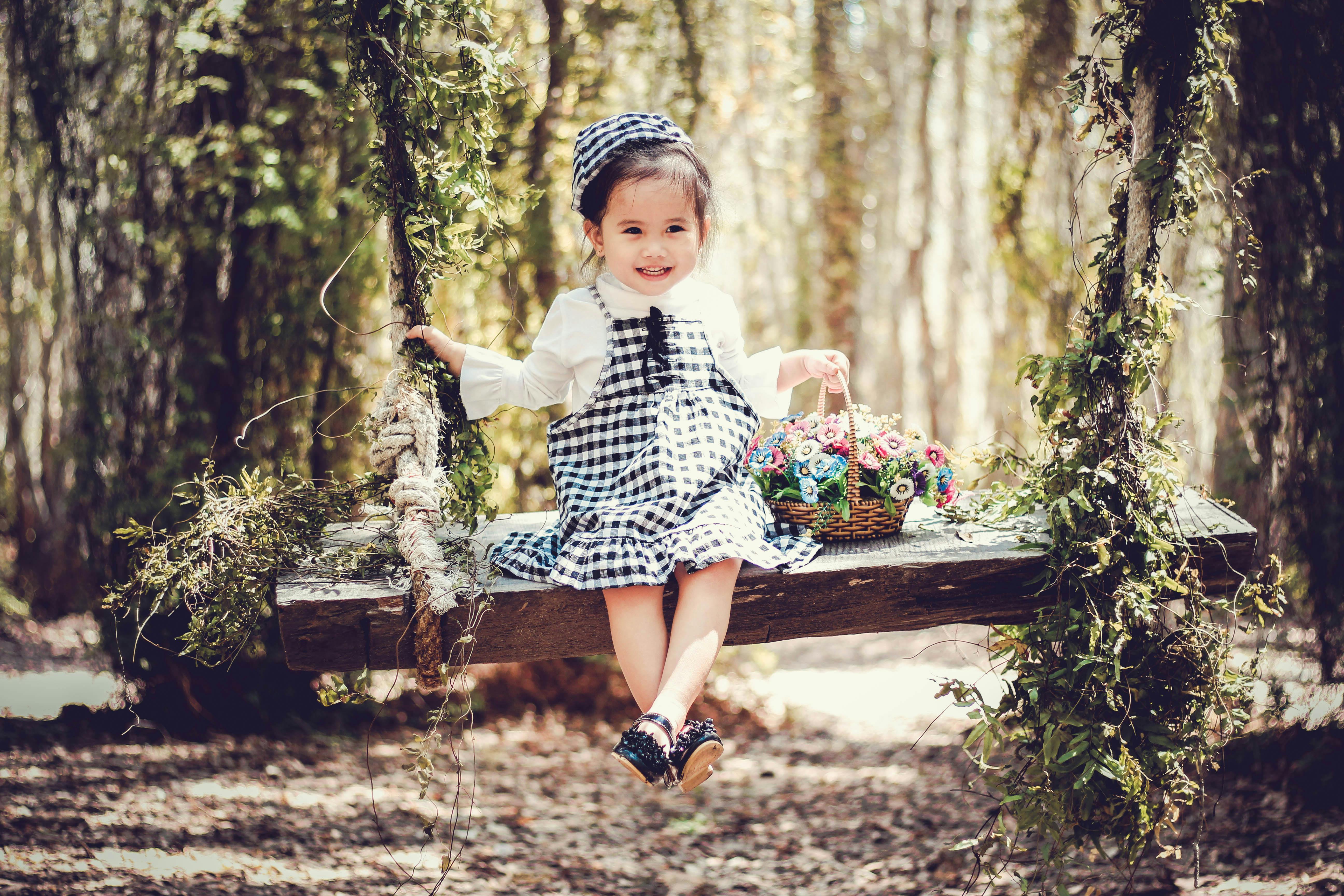Babies can enjoy the soothing motion of a swing for a surprisingly long time. While it’s tempting to keep your baby in the swing for hours every day, there are important safety considerations to keep in mind before you put your little one in the swing. In this article, we’ll explain how long a baby can safely use a swing, as well as some tips on how to switch from the swing to a crib.The American Academy of Pediatrics recommends that infants should not use a baby swing for more than 30 minutes at a time. It is important to monitor your baby while they are in the swing and limit their time in it to prevent them from becoming overly fatigued.
What Age Is Appropriate For A Baby To Start Using A Swing?
Deciding when a baby can start using a swing can be tricky. Generally, babies should not be put in a swing until they can support their head and neck on their own, which usually happens around the age of four to six months. It is important to make sure that the baby is securely strapped into the swing, and that the straps are not too tight.
When deciding if it is time for your baby to start using a swing, you should also consider their development. Babies who are able to sit up on their own may be ready for a swing at an earlier age than those who cannot. Additionally, if your baby has any medical conditions or health concerns, it is important to consult with your pediatrician before introducing a swing into your home.
Swinging can have both positive and negative impacts on a baby’s development. On one hand, swinging can help with sensory development and motor skills as well as provide comfort and relaxation for babies who are prone to fussy behavior. On the other hand, excessive swinging or using swings improperly may lead to development delays or even physical harm. Therefore, it is important to monitor your child closely while they are in the swing and ensure that they are safe at all times.
In general, babies should not be placed in swings until they reach at least four months old and demonstrate the ability to hold up their head and neck independently. As always, it is best to consult with your pediatrician before introducing any new activity or piece of equipment into your home environment.
With proper safety precautions and close supervision from caregivers, swings can provide an enjoyable experience for both you and your baby!
Safety Guidelines for Using a Baby Swing
It is important to ensure your baby’s safety when using a baby swing. Here are some safety guidelines to consider when using a baby swing:
First and foremost, always read the manufacturer’s instructions and safety warnings carefully before using the swing. Make sure the swing is properly assembled according to the instructions. It is also important to inspect the play area regularly for any potential hazards such as loose cords or sharp objects.
Never leave your baby unattended in the swing, even if you plan to return shortly. Babies can quickly become entangled in cords or move out of the swing if left unsupervised. Additionally, it is important to make sure that the swing is securely fastened so it will not tip over while in use.
When placing your baby in the seat, be sure that the harness straps are snugly secured around them and that no part of their body can slip through any openings. It is also important to ensure that your baby’s head is supported at all times and that they are not able to lean forward or backwards too far while in use.
When selecting an appropriate swing for your child, look for one with an adjustable speed setting so you can adjust it as your child grows and develops. Additionally, be sure to check for any recalls or safety warnings issued by the manufacturer before making a purchase.
Finally, never place toys on or near the swing as these could become hazardous if they come loose during use or your baby attempts to reach them while swinging. By following these simple guidelines, you can help ensure your little one’s safety when enjoying their time in a baby swing.
The Benefits of Using a Baby Swing for Babies
Babies love to swing and sway, and baby swings are designed to provide just that! A baby swing provides a safe, comfortable place for babies to relax, play and nap. They can also provide parents with a much-needed break from holding their baby all day long. Baby swings provide several benefits for parents and babies alike.
One of the biggest advantages of using a baby swing is that it keeps babies entertained. Swinging can help soothe fussy babies, as the motion can be calming and lull them into a peaceful sleep. The soothing swaying motion can also help keep babies entertained during the day when parents need to take care of other tasks.
Baby swings are also great for helping babies develop their motor skills. The gentle swinging motions help strengthen their neck, back and leg muscles. This helps them become better at sitting up or rolling over on their own as they grow older. In addition, the motion of swinging can help stimulate their brains and encourage cognitive development.
Finally, baby swings are highly beneficial for giving parents a break when caring for their little one. Busy moms and dads often need some time away from their little one in order to get some chores done or even just relax themselves. Baby swings keep your little one safely occupied while you take some time off from parenting duties.
Is It Safe To Leave My Baby Unsupervised In A Swing?
When it comes to leaving your baby unsupervised in a swing, it is important to remember that safety is paramount. Swings are great for soothing and entertaining babies, but they should never be left unattended. Babies can easily tip out of a swing if not properly secured, so it is essential to ensure that the safety belt or harness is correctly fitted and fastened before use.
It’s also important to make sure that the swing is on a flat surface and stable so as not to tip over or move unexpectedly. The seat should be reclined slightly, and you should check frequently to ensure your baby’s head is not slumped over. Additionally, swings should always be used according to the manufacturer’s instructions and age guidelines.
The American Academy of Pediatrics (AAP) recommends that babies are never left unsupervised in any type of infant seat or carrier for extended periods of time, including swings. This means that parents need to stay close by their baby when they are in the swing, or have someone else supervise their child while they take a break.
Finally, it’s important to note that swings are not intended for extended sleep periods; instead they should only be used for brief periods of time when your baby needs to be comforted or entertained. When your baby falls asleep in their swing, make sure you move them into a safe sleep environment such as their crib or bassinet right away.
In conclusion, although swings can provide comfort and entertainment for babies, it is essential that parents never leave their child unsupervised in one. Parents must ensure the safety harness is fastened securely before use, as well as confirming the swing is on a flat surface and stable before allowing their baby to use it. Additionally, babies should never be left unattended in any type of infant seat or carrier for extended periods of time; instead parents must stay close by or have someone else supervise them while they take a break.

Positioning Your Baby in the Swing
Positioning your baby in the swing is one of the most important steps when it comes to ensuring their safety and comfort. The key is to make sure that your child’s body is properly supported and that their head and neck are in an upright position. Here are some tips for properly positioning your baby in the swing:
1. Place your baby on their back in the center of the seat with their feet facing outwards. Make sure that their legs are not hanging off of the edge of the seat.
2. Use a harness or straps to secure them into place, making sure it is snug but not too tight.
3. Put a small pillow or rolled up towel behind your baby’s back for support, particularly for newborns who may not have enough neck strength to stay upright on their own yet.
4. Make sure that their head and neck are in line with each other and positioned at a slight angle rather than completely upright or completely slumped over.
5. Position your baby so that they are facing away from the motorized part of the swing, as this could be too loud for them or cause them discomfort if they’re too close to it.
6. Make sure that any toys placed near your baby are far enough away from their face so as not to cause any discomfort or harm if they move around suddenly while in the swing.
Following these guidelines will help ensure that your child is properly positioned and secure while in their swing, allowing you some peace of mind while they enjoy a soothing ride!
What Are The Dangers Of Overusing Of A Baby Swing?
Using a baby swing can provide calming and soothing motion for your infant, making it a great tool for parents. However, when overused, the baby swing can become a potential hazard. Babies should not be left in the swing for too long as this can lead to them developing an abnormal posture. For example, when the baby is placed in the swing with their legs hanging down and unsupported, this can cause hip dysplasia and interfere with proper hip development. Additionally, leaving your baby in the baby swing too long can cause flat head syndrome due to their head being positioned in one position for too long.
When using a baby swing, it is important to ensure that you are following the manufacturer’s instructions. This includes not only how to assemble and use the product correctly but also any age or weight limits that are recommended by the manufacturer. Babies should also never be left unattended in a baby swing as they may be able to move out of it or tip it over while they are still inside of it. Finally, do not forget to check on your little one often while they are in the swing and limit their time in it to no more than 20 minutes at a time.
Ensure Proper Safety Features
Parents should always make sure the swing has all the necessary safety features. This includes a sturdy, secure frame, a harness with safety straps and an adjustable seat belt. It is also important to make sure the swing is placed on a flat surface and in an area that is free of any tripping hazards. Parents should also pay close attention to the weight limit of the swing and make sure their baby does not exceed it.
Monitor Baby’s Activity
When babies are in the swing, it is important for parents to monitor their activity at all times. Parents should ensure that their baby’s head remains in an upright position and does not slump forward or back while they are in the swing. The baby should also be supervised while they are playing in the swing or moving around, as even small movements can cause them to become unstable and fall out of the seat.
Check All Moving Parts
Parents should regularly check any moving parts on the swing to ensure they are all working properly and securely attached. This includes checking for any wear or tear on cords, straps, buckles, springs or other components that could cause a potential safety hazard. Any broken or loose parts should be fixed or replaced immediately.
Be Mindful Of Clothing
Parents should also be mindful of what their baby wears when they are in the swing. Loose-fitting clothing can easily become tangled in cords or straps, which can be dangerous for a baby who is sitting still for long periods of time. It is best to dress your baby in comfortable, snug-fitting clothing while they are in the swing.
Provide Supervision
It is always important to provide supervision when babies are using swings. Even if your child seems content playing alone, it is best to stay close by so you can intervene if needed. This will help keep your baby safe from any potential dangers associated with using swings.

Conclusion
It is safe to say that a baby can use a swing for as long as they enjoy it and are comfortable in it. However, once the baby reaches 20 pounds, it is best to transition them into a toddler swing or other play equipment. Even though a baby can use a swing for an extended period of time, it is important to remember that each child is different and has their own safety needs. Therefore, parents should always monitor their children while they are playing in the swing and keep an eye on them at all times.
In conclusion, the amount of time that a baby can use a swing depends on the baby’s weight and comfort level. Although there is no single answer for how long a baby should stay in the swing, it is always best to follow safety precautions such as monitoring your child and transitioning them into other play equipment when appropriate.




